Precinct

The Jinja Precinct
A jinja and its grounds are like the home of the kami, and on passing through the torii gate one enters a sacred space. It is important to note that many ceremonies and rituals take place on the jinja grounds. Some visitors bow when entering or leaving a jinja but it is sufficient to treat the grounds with the respect you would show when visiting an important person in their home.
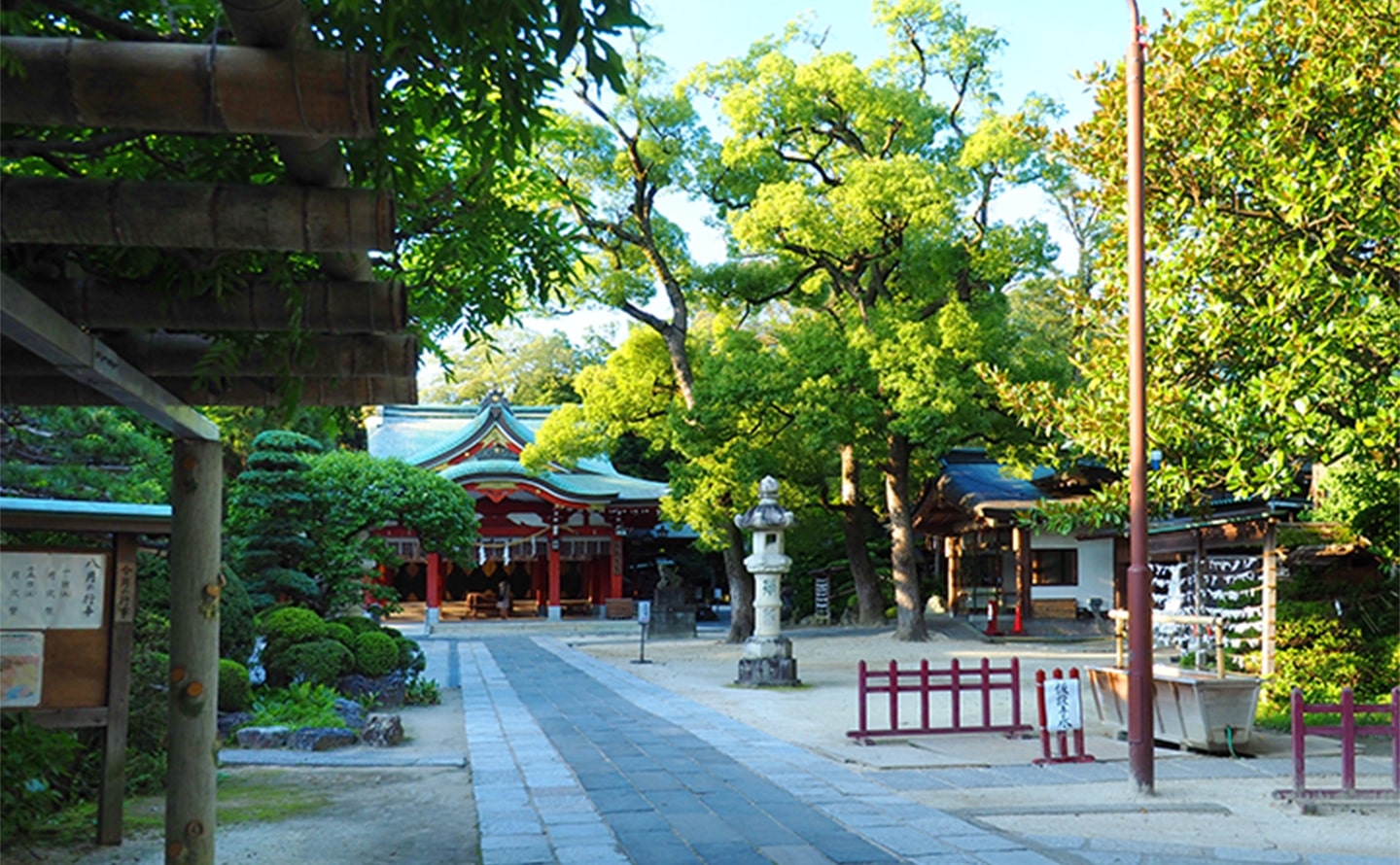
Torii
The entrance to a jinja is marked by a torii. The torii delineates the border between the sacred space of the jinja grounds and the everyday world outside. Some sacred Shinto sites such as mountains do not have a prayer hall or main hall. In these cases a torii will stand at the entrance to the sacred area and symbolize the presence of kami. You may pause and bow your head before walking through the torii.
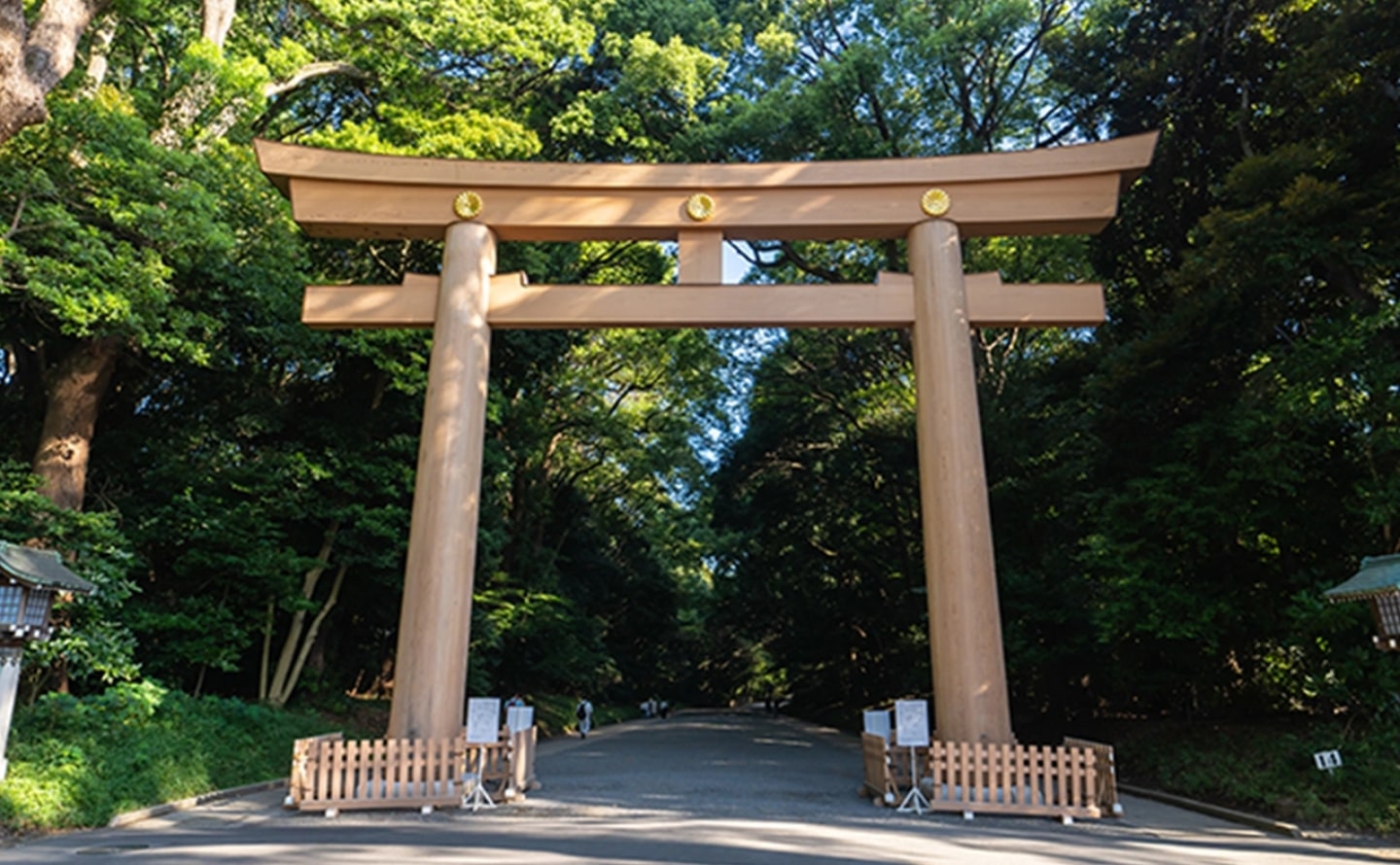
Sando
This is the main path that usually begins at the first torii and leads to the main prayer hall (haiden).

Temizuya
As purity is very important in Shinto, most jinja have a covered water font and basin which you should use to ritually cleanse your hands and rinse your mouth before paying your respects to the kami. The temizuya is often placed near the entrance to the jinja.
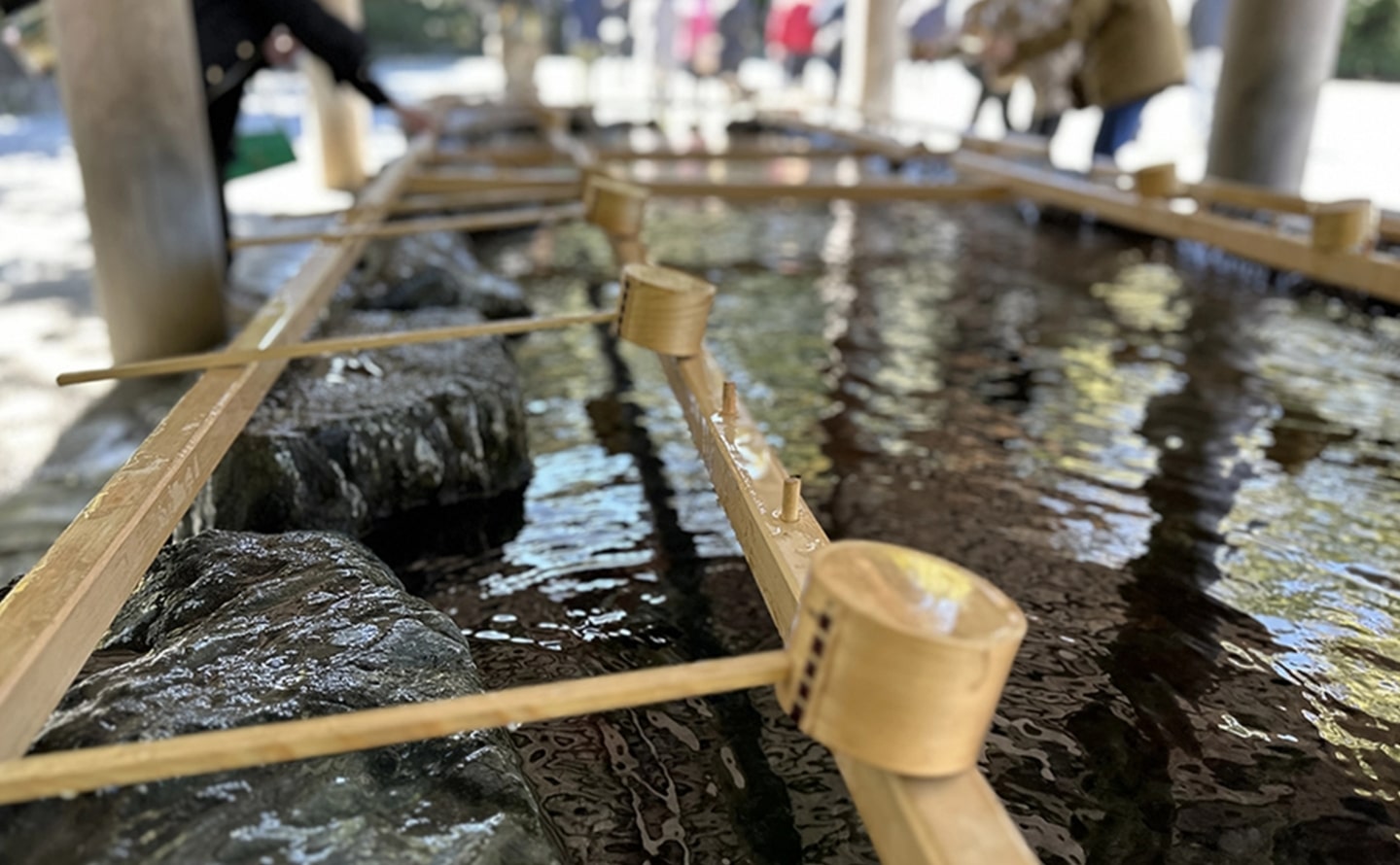
Koma inu
Many jinja have a pair of animal statues in the grounds. The most common are mythological creatures called “koma inu”, which resemble lions. These statues represent guardians, protecting the jinja and keeping evil influences out. Typically, the mouth of one statue is open and the other closed.

Haiden
The prayer hall stands in front of the main hall (honden) and is often the most prominent structure visible on entering the jinja precinct. The haiden is used for ceremonies involving priests and visitors and also for the veneration of the kami. The haiden is often connected to the main sanctuary by a covered corridor which often functions as the area for making sacred offerings to the kami.

Honden
The main hall or sanctuary is where the sacred object of veneration is housed. It is also the most sacred space where the enshrined kami of the jinja reside. It is usually approached from the main torii along the sando or sacred path. The honden doors are locked and only opened for special rituals.
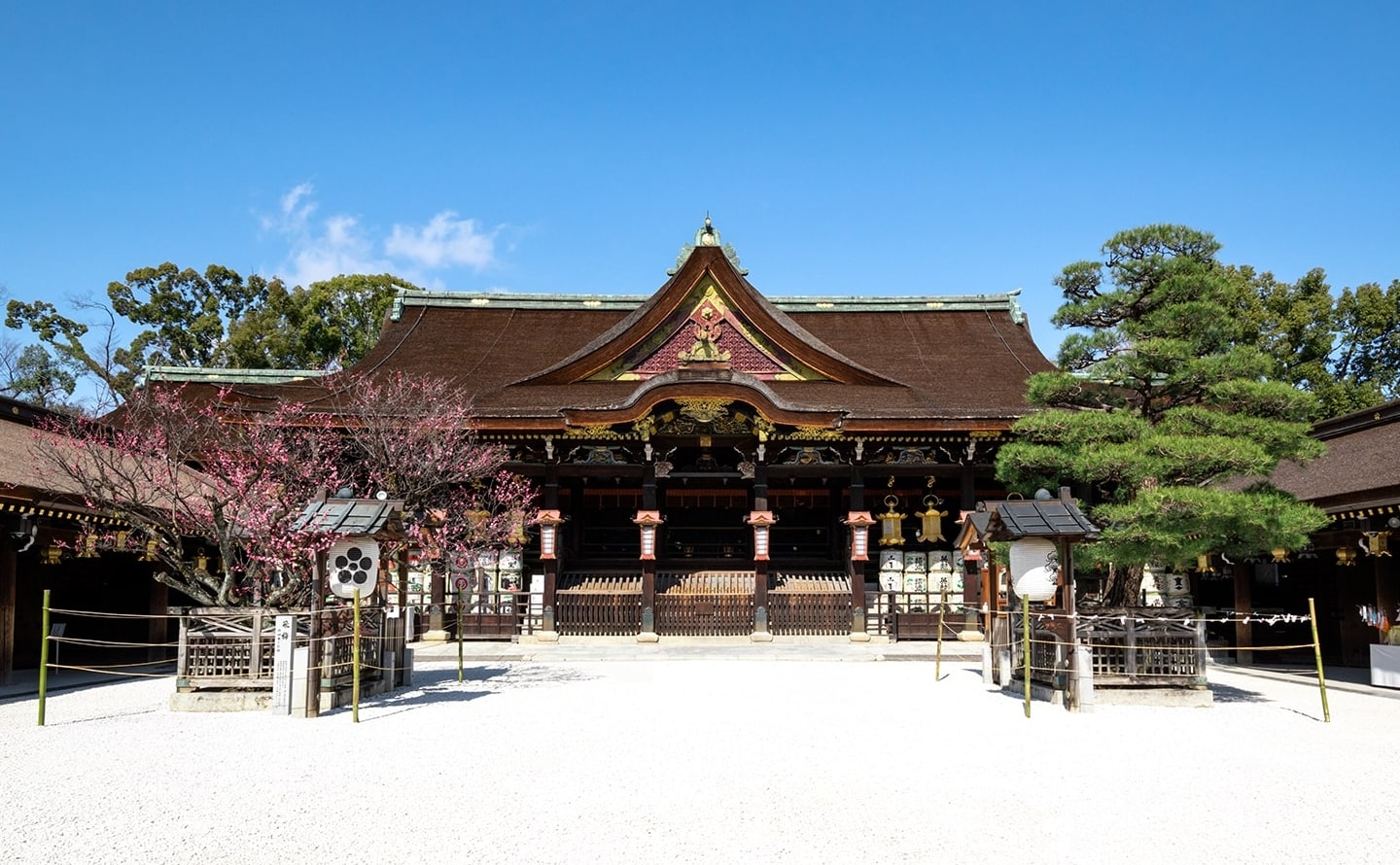
Goshintai
The sacred object of veneration within the inner sanctum of the honden is referred to as “goshintai”, literally, “the body of the kami”. It marks the presence of the main object of veneration which the kami descends to or into which it is invited. Although goshintai are never seen by the public, examples include swords, stones and mirrors.
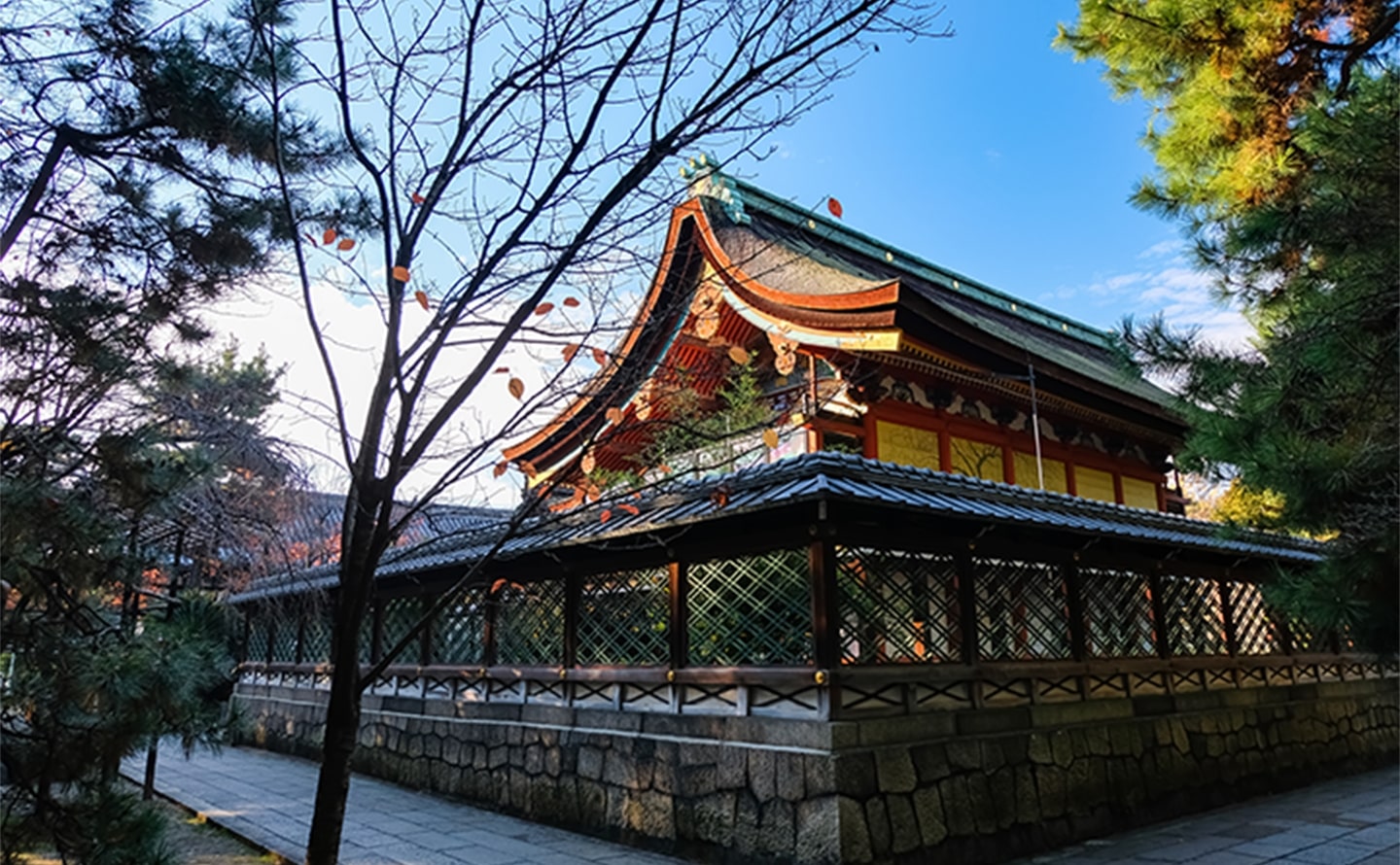
Shamusho
This is the administrative building of the jinja. At many jinja guests are received here and inquires related to the jinja can be answered.
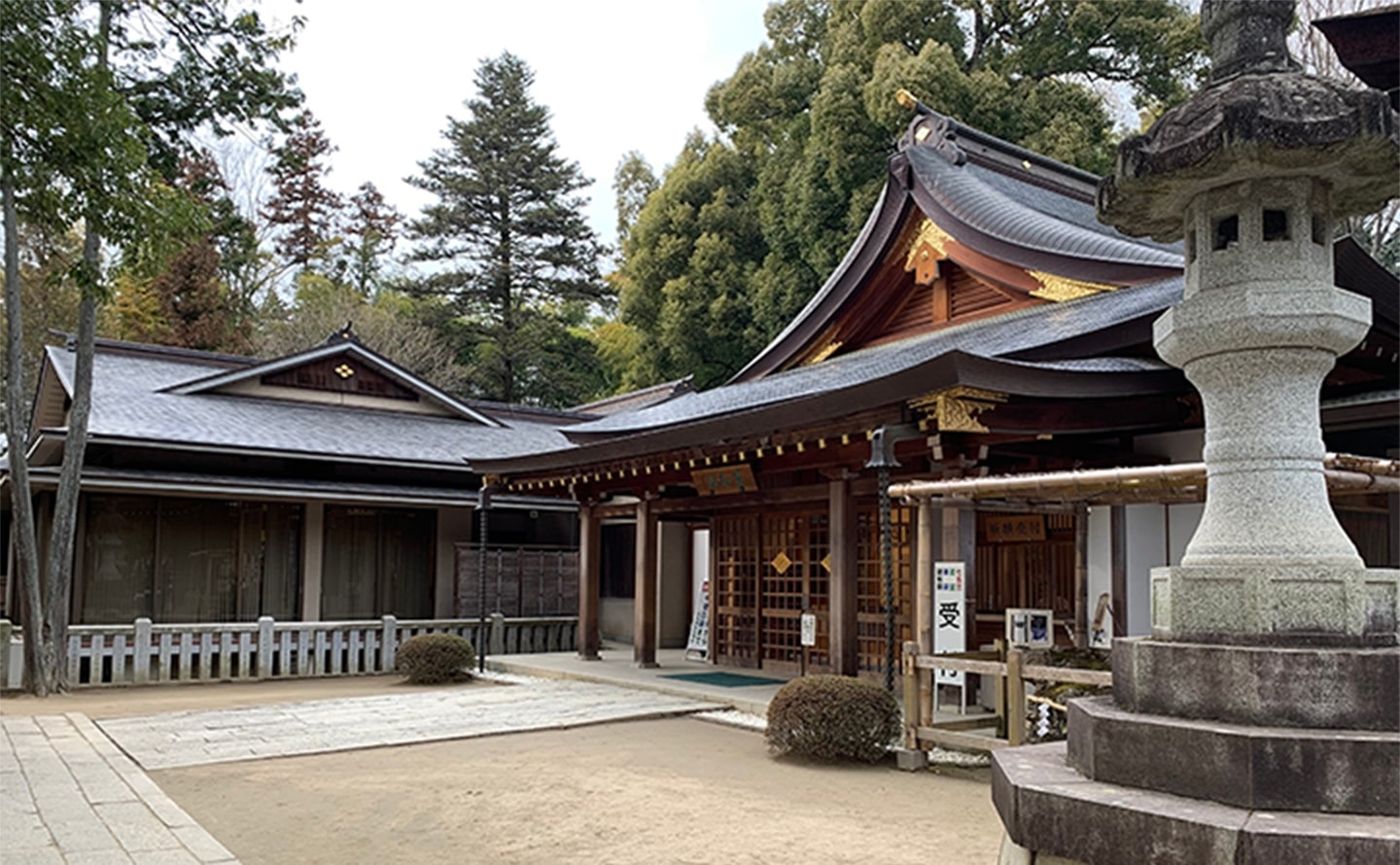
Juyosho
Many jinja have a designated place where visitors can receive various items such as amulets and ema (votive tablets). A small offering is generally required and miko or priests can inform you of the amount. In some cases the juyosho also functions as the jinja administrative office (shamusho).
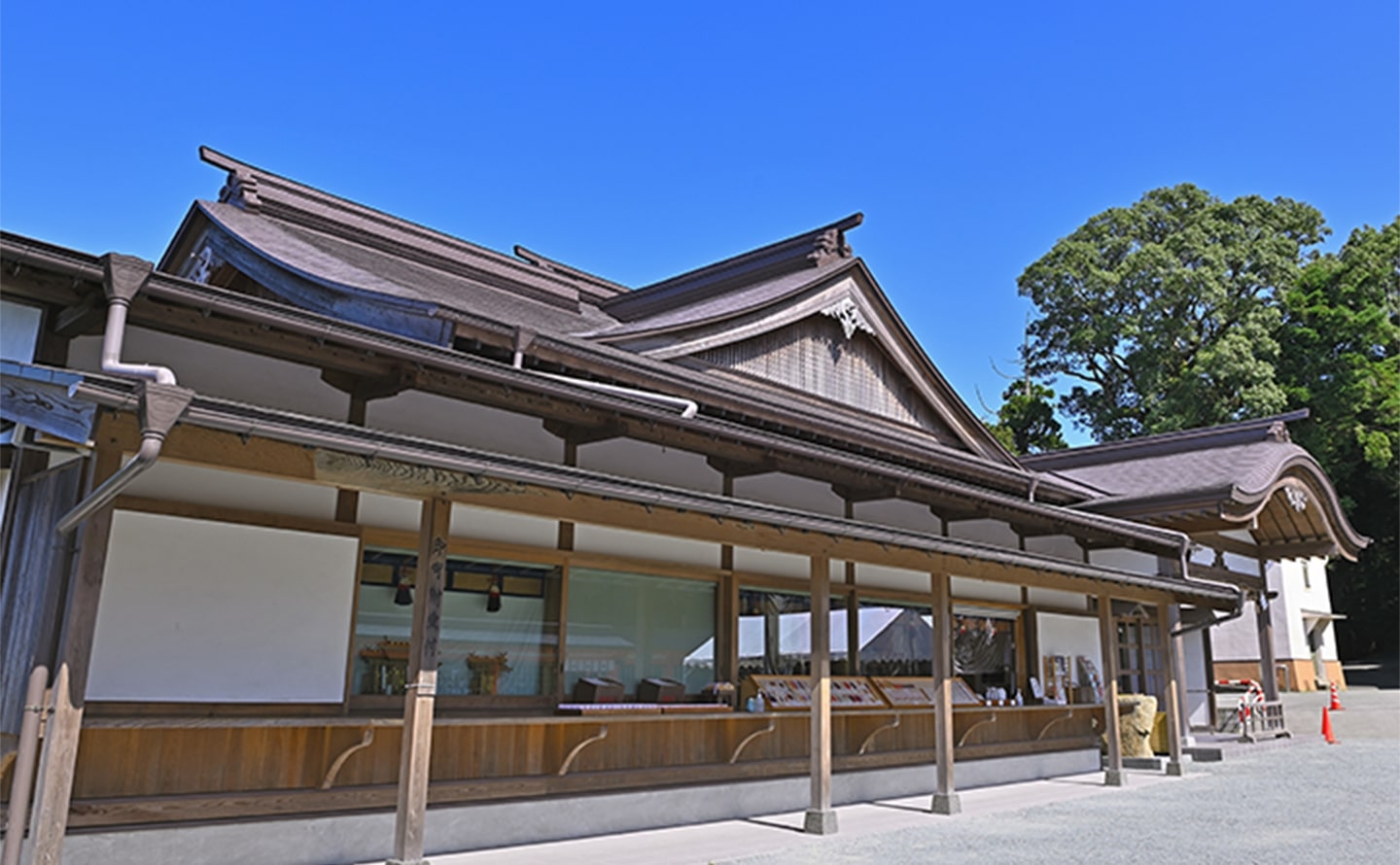
Kaguraden
This building is used as a type of stage for court music, court dance and sacred dance. Other official rituals and performances are sometimes conducted here.
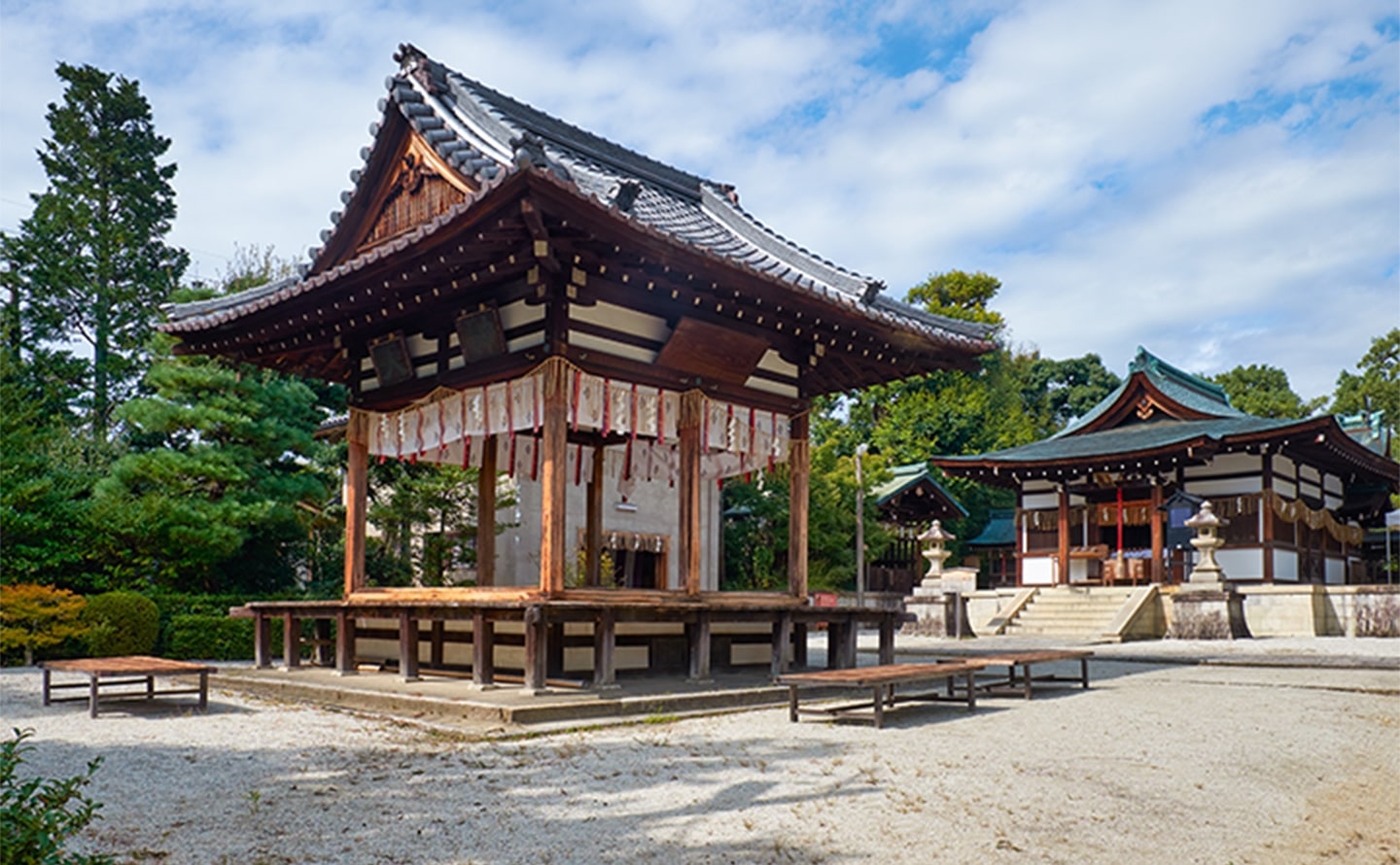
Romon
Originally used in Buddhist temples, this roofed gate functions as the formal entrance to the main sanctuary. In the lower half of some gates warrior guardians in ancient costume (zuijin) stand guard to protect the sanctuary and prevent evil from entering.

Homotsuden
Often referred to as the “treasure hall” of a jinja, this storage building houses valuable possessions such as sacred items related to the kami.
Items may be put on display in the homotsuden or in a precinct museum where an admission fee is generally required.
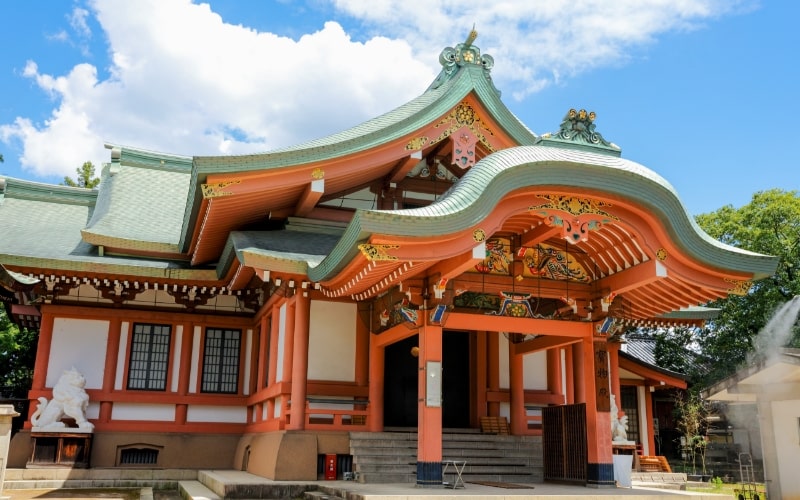
Saisenbako
This is an offering box with a slatted top, typically made of wood, into which visitors and worshippers alike toss money. Standing at the entrance to the haiden, this is attended to prior to prayer. (In the case of a jinja with no haiden, the saisenbako may stand directly in front of the honden)

Shide and Shimenawa
Shide are white paper streamers in a folded zigzag pattern. They are attached at intervals to shimenawa, a twisted straw rope that serves to delineate sacred space and objects.
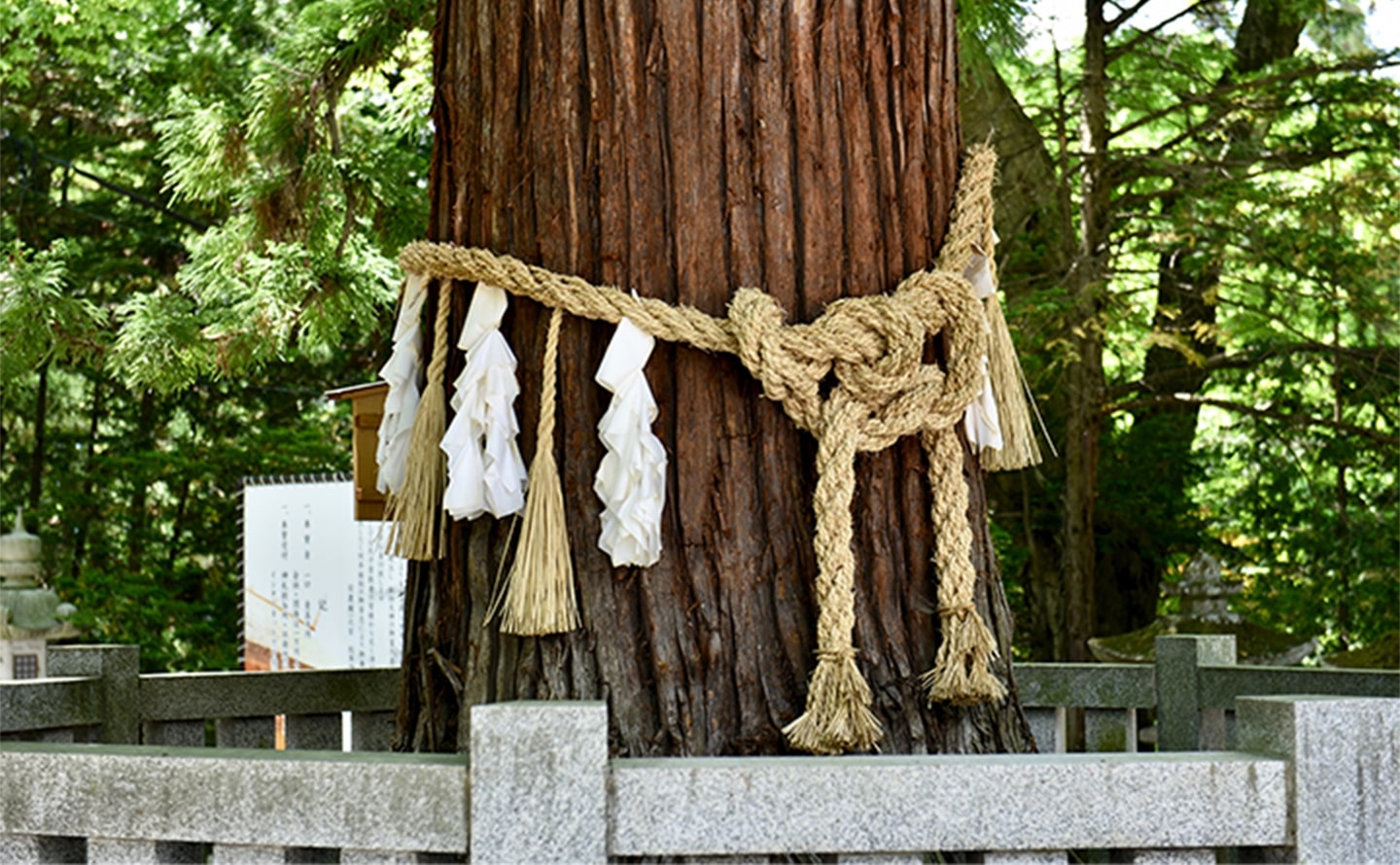
Toro
These traditional votive lanterns can be seen on the jinja grounds and are often donated as offerings to the kami by worshippers. They are usually of a standing or hanging type and made of stone, wood or metal.
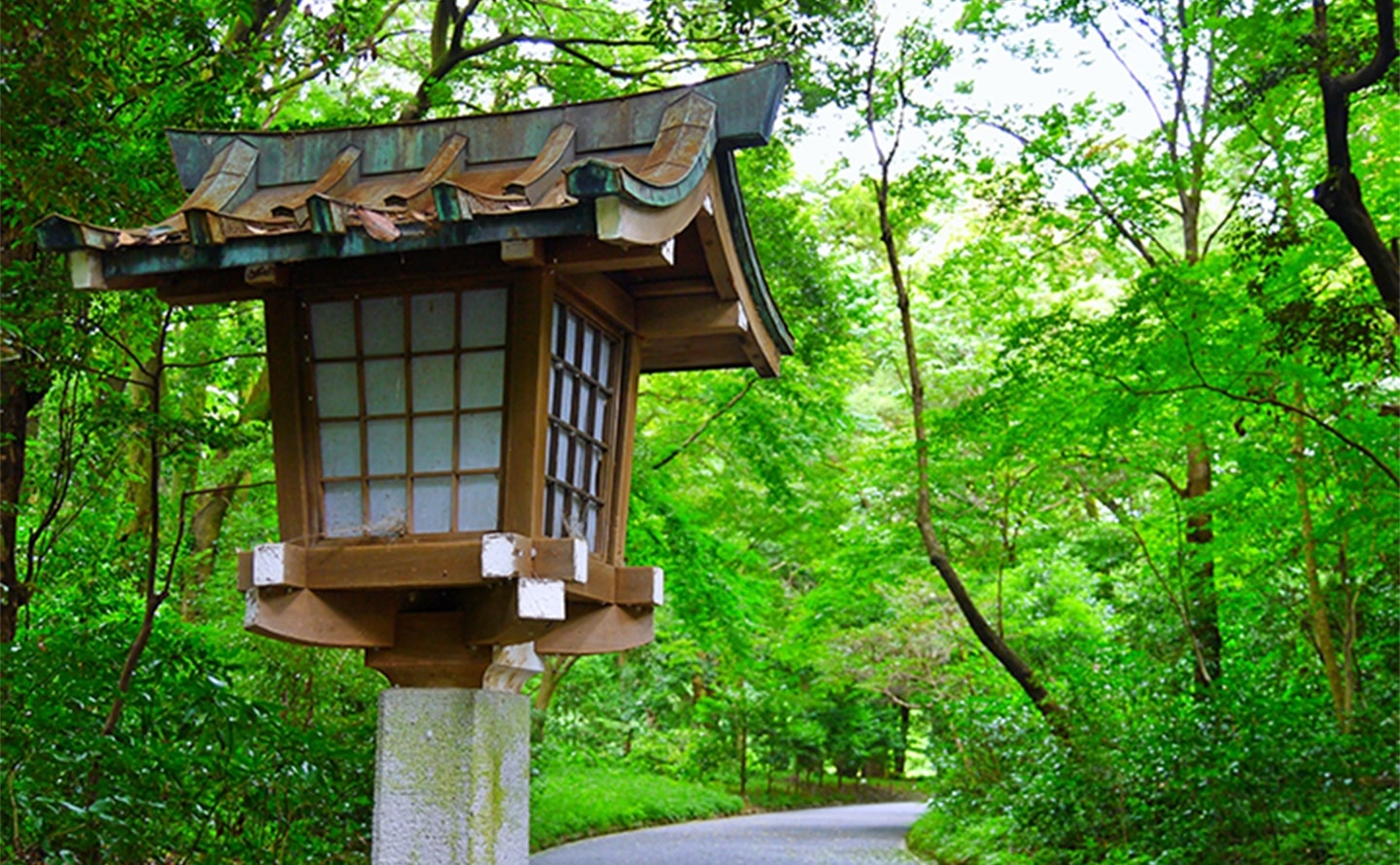
Chinowa
This is a large sacred ring made of kaya grass erected on the jinja grounds during special purification days, typically in summer. Visitors pass through the ring to purify themselves and avoid misfortune in the coming months.
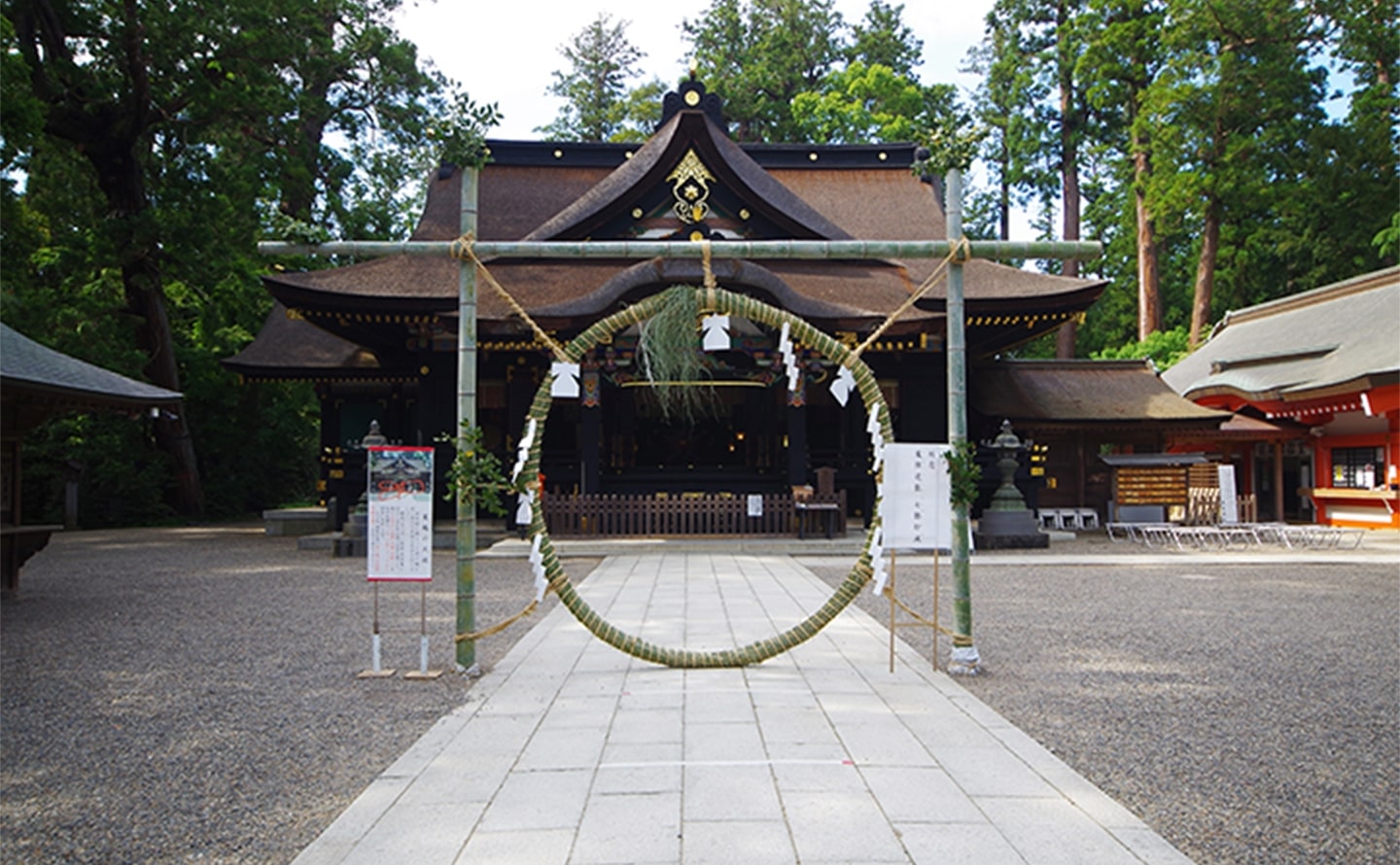
Glossary
A female attendant assists the priests in performing rituals, offering amulets and performing sacred dance.


